 You may have heard the term "biomimetic" before, but what you may not know is how it relates to dentistry- or why we are so passionate about using a biomimetic dentistry approach with our patients. The word biomimetic literally means ‘imitating (mimesis) life (bios).’ In dentistry, biomimetic dentistry means we take a minimally invasive approach to dental care- an approach which strives to keep as much of the natural tooth intact as possible. We do this by using specialized techniques, tools, and advanced materials to repair damaged teeth- instead of just cutting away the damaged area and hoping whatever we stick to the tooth stays in place and looks realistic. The ultimate goal of our practice, and of biomimetic dentistry as a whole, is to "help our patients keep their teeth for a lifetime... In a condition that’s beautiful and that’s functional."
You may have heard the term "biomimetic" before, but what you may not know is how it relates to dentistry- or why we are so passionate about using a biomimetic dentistry approach with our patients. The word biomimetic literally means ‘imitating (mimesis) life (bios).’ In dentistry, biomimetic dentistry means we take a minimally invasive approach to dental care- an approach which strives to keep as much of the natural tooth intact as possible. We do this by using specialized techniques, tools, and advanced materials to repair damaged teeth- instead of just cutting away the damaged area and hoping whatever we stick to the tooth stays in place and looks realistic. The ultimate goal of our practice, and of biomimetic dentistry as a whole, is to "help our patients keep their teeth for a lifetime... In a condition that’s beautiful and that’s functional."
What makes biomimetic dentistry different is kind of like that old metaphor about optimism versus pessimism, where you are asked whether you see the glass half full or half empty. Traditional methods of dentistry historically have taken a more pessimistic approach, giving little thought to the remaining structure of the tooth, and instead focusing on the repaired section. When you pay more attention to the restoration, it’s a lot like seeing the glass as half empty, because you are not focused on the healthy portion of the tooth. With biomimetic dentistry, we aim to repair the damage to the tooth, not to simply replace the damaged areas, as this essentially creates more damage to the tooth in the process. This is like seeing the glass half-full because we understand the importance of preserving the natural tooth.
In addition to your teeth looking better with biomimetic dentistry, biomimetic dentistry offers two things that many traditional procedures cannot: comfort and predictability. Because biomimetic procedures are minimally invasive, they are naturally less painful than traditional dentistry procedures. Not only that, but most patients experience less tooth sensitivity after the procedure, as well. As for predictability, with biomimetic dentistry, there are no surprises. You already know what your tooth looks like, so restoring that tooth creates no change in the look or feel of your natural tooth. Best of all, because the tooth is repaired, you can feel confident that the health of your teeth is protected- and that you will keep your natural teeth for the rest of your life.
So, given what we know about biomimetic dentistry, why don’t more practices apply biomimetic dentistry principles to their practice? The biomimetic approach is not as easy as traditional dentistry. Biomimetic dentistry requires a lot of skill, patience, and training. It requires the dentist and their staff to look at dentistry under a completely different lens than they were probably initially trained to do. Hopefully, in the future, this will change, and biomimetic dentistry will someday become the standard of care in all practices. But until then, finding a practice which follows the principles of biomimetic care and maintains their focus on the health of the existing tooth instead of the damaged portions of the tooth can be an integral part of enjoying the strength and beauty of your natural teeth for the rest of your life.
If you’d like to learn more about how Dr. Lederman and the biomimetic approach to dentistry can benefit the holistic health of your teeth, give us a call at 516-882-1764 for an appointment.



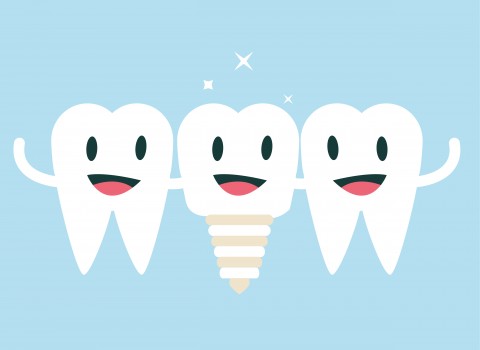 For patients who have lost teeth due to oral infections like periodontitis, a new spin on dental implants could help prevent similar infections from occurring in the future. Researchers at Katholieke Universiteit Leuven (KU Leuven) in Belgium have developed a dental implant with a built-in reservoir that can be filled with antimicrobial drugs to fight or prevent oral infection. We spoke to Dr. Gary Lederman of Bellmore, NY about this exciting new dental technology.
For patients who have lost teeth due to oral infections like periodontitis, a new spin on dental implants could help prevent similar infections from occurring in the future. Researchers at Katholieke Universiteit Leuven (KU Leuven) in Belgium have developed a dental implant with a built-in reservoir that can be filled with antimicrobial drugs to fight or prevent oral infection. We spoke to Dr. Gary Lederman of Bellmore, NY about this exciting new dental technology. With winter upon us and many of us planning on jetting off to warmer locales for vacation, a new study published in Science Daily may just add one more item to your pre-travel checklist: a visit to the dentist. If there’s even a chance your vacation could include scuba diving on its itinerary, Dr. Gary Lederman encourages you to have one of your twice-yearly dental exams prior to taking off.
With winter upon us and many of us planning on jetting off to warmer locales for vacation, a new study published in Science Daily may just add one more item to your pre-travel checklist: a visit to the dentist. If there’s even a chance your vacation could include scuba diving on its itinerary, Dr. Gary Lederman encourages you to have one of your twice-yearly dental exams prior to taking off.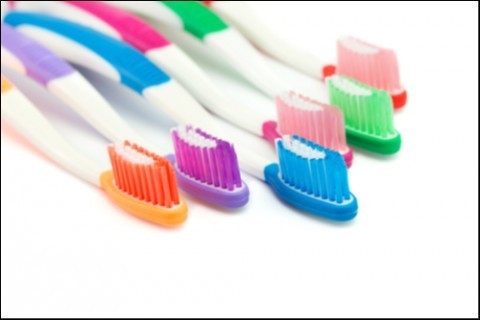 Two recent discoveries by researchers around the globe are yielding promising results for those suffering from chronic periodontitis. Periodontitis is a gum infection that if left untreated, damages both the soft tissue and bones surrounding the teeth- and can eventually lead to their loss. Periodontitis is also responsible for a variety of illnesses including heart disease, diabetes, dementia, rheumatoid arthritis, and even certain cancers. But now, universities in the US and Australia have released two unrelated studies that offer hope to those who suffer from chronic periodontitis. Dr. Gary Lederman of Bellmore, NY discusses these findings.
Two recent discoveries by researchers around the globe are yielding promising results for those suffering from chronic periodontitis. Periodontitis is a gum infection that if left untreated, damages both the soft tissue and bones surrounding the teeth- and can eventually lead to their loss. Periodontitis is also responsible for a variety of illnesses including heart disease, diabetes, dementia, rheumatoid arthritis, and even certain cancers. But now, universities in the US and Australia have released two unrelated studies that offer hope to those who suffer from chronic periodontitis. Dr. Gary Lederman of Bellmore, NY discusses these findings.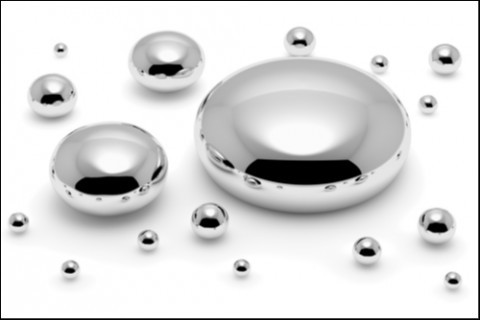 You may have noticed mercury fillings back in the news recently, following a recent study by the University of Georgia’s Department of Environmental Health. The study evaluated 15,000 patients and found that patients possessing 8 or more mercury amalgam fillings had 150% more mercury in their bloodstream than those with no amalgam fillings. While many dentists have switched over to resin composite fillings for health reasons, Dr. Lederman stopped using amalgam fillings over 20 years ago, long before anyone realized the full extent of the dangers of amalgams- but for completely different reasons.
You may have noticed mercury fillings back in the news recently, following a recent study by the University of Georgia’s Department of Environmental Health. The study evaluated 15,000 patients and found that patients possessing 8 or more mercury amalgam fillings had 150% more mercury in their bloodstream than those with no amalgam fillings. While many dentists have switched over to resin composite fillings for health reasons, Dr. Lederman stopped using amalgam fillings over 20 years ago, long before anyone realized the full extent of the dangers of amalgams- but for completely different reasons. A promising new study by the Columbia College of Dental Medicine at Columbia University is offering hope for the tens of millions of people around the world suffering from Temporomandibular Joint (TMJ) Disorder. In the study, researchers were successfully able to regenerate the cartilage within the temporomandibular joint using stem cells located within the jaw bone. Dr. Gary Lederman of Bellmore, NY is a neuromuscular dentist who specializes in the treatment of TMJ disorder. We spoke to him about the implications of this study, and what the findings could mean for patients living with TMJ disorder.
A promising new study by the Columbia College of Dental Medicine at Columbia University is offering hope for the tens of millions of people around the world suffering from Temporomandibular Joint (TMJ) Disorder. In the study, researchers were successfully able to regenerate the cartilage within the temporomandibular joint using stem cells located within the jaw bone. Dr. Gary Lederman of Bellmore, NY is a neuromuscular dentist who specializes in the treatment of TMJ disorder. We spoke to him about the implications of this study, and what the findings could mean for patients living with TMJ disorder.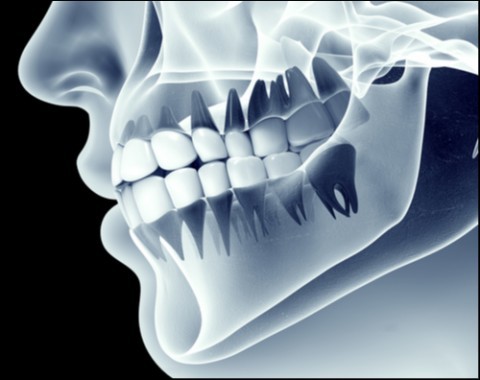 It’s no secret that pollution and environmental damage can have harmful effects on your health. You’ve probably seen news reports about how poor air quality can contribute to an increase in skin and lung cancers, among other things. But did you know that the environment can also be linked to chronic conditions like Temporomandibular Joint Dysfunction (TMJ) and sleep apnea? Dr. Gary Lederman discusses how something as simple as the air we breathe can have a huge impact on our bodies.
It’s no secret that pollution and environmental damage can have harmful effects on your health. You’ve probably seen news reports about how poor air quality can contribute to an increase in skin and lung cancers, among other things. But did you know that the environment can also be linked to chronic conditions like Temporomandibular Joint Dysfunction (TMJ) and sleep apnea? Dr. Gary Lederman discusses how something as simple as the air we breathe can have a huge impact on our bodies. If you’ve ever watched professional sports on TV, you’ve probably noticed athletes from a variety of different sports wearing mouth guards. But while mouthguards make sense in rougher sports like hockey, football, and boxing, did you know that athletes from every genre of sport can utilize the benefits of mouthguards? One such mouth guard- the Pure Power Mouthguard, is creating a lot of buzz in both the athletic and dental communities. We spoke to Dr. Gary Lederman of Bellmore, NY about this innovative technology.
If you’ve ever watched professional sports on TV, you’ve probably noticed athletes from a variety of different sports wearing mouth guards. But while mouthguards make sense in rougher sports like hockey, football, and boxing, did you know that athletes from every genre of sport can utilize the benefits of mouthguards? One such mouth guard- the Pure Power Mouthguard, is creating a lot of buzz in both the athletic and dental communities. We spoke to Dr. Gary Lederman of Bellmore, NY about this innovative technology. The holiday season is fast approaching, and so are a thousand photo ops with friends and family. Is your mouth ready for its close up? Dr. Gary Lederman’s got some great tips for making your smile outshine the lights of the season- and for keeping it bright during all those parties.
The holiday season is fast approaching, and so are a thousand photo ops with friends and family. Is your mouth ready for its close up? Dr. Gary Lederman’s got some great tips for making your smile outshine the lights of the season- and for keeping it bright during all those parties.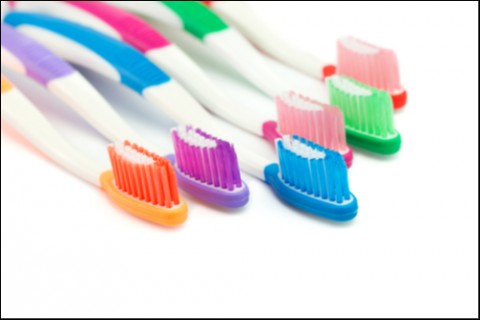 Soft bristle, hard bristle, small, medium, large, electric, manual- these are just a few of different kinds of toothbrushes consumers must decide between. But with so many choices in the toothbrush aisle, making that choice can be very overwhelming. We spoke to Dr. Gary Lederman of Bellmore, NY about how to choose the best brush for your teeth. The good news is, according to Lederman, it’s a lot easier than you think.
Soft bristle, hard bristle, small, medium, large, electric, manual- these are just a few of different kinds of toothbrushes consumers must decide between. But with so many choices in the toothbrush aisle, making that choice can be very overwhelming. We spoke to Dr. Gary Lederman of Bellmore, NY about how to choose the best brush for your teeth. The good news is, according to Lederman, it’s a lot easier than you think. This year’s New York Fashion Week featured a surprising accessory that you already have: your smile. In conjunction with fashion expert Tai Beauchamp, the American Association of Orthodontics set up a pop-up shop in NYC’s Columbus Circle where the public could come and learn more about how to get their best smile ever.
This year’s New York Fashion Week featured a surprising accessory that you already have: your smile. In conjunction with fashion expert Tai Beauchamp, the American Association of Orthodontics set up a pop-up shop in NYC’s Columbus Circle where the public could come and learn more about how to get their best smile ever.